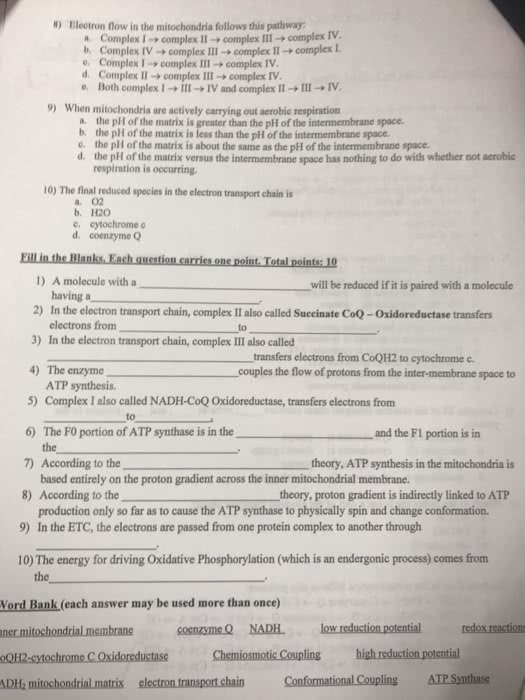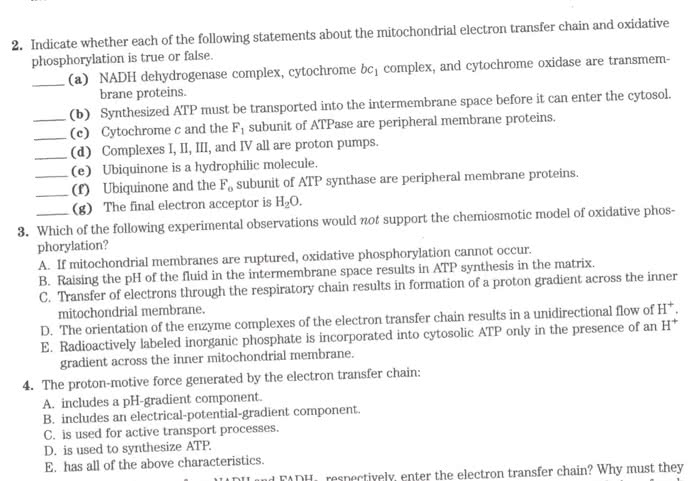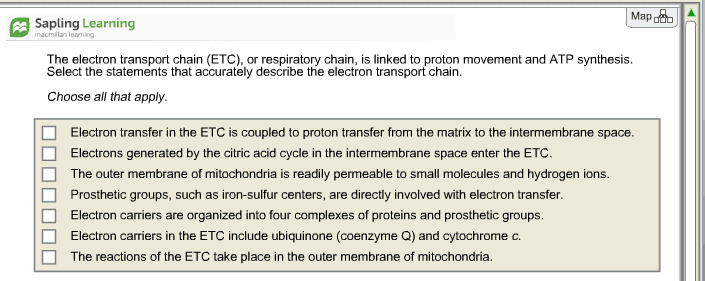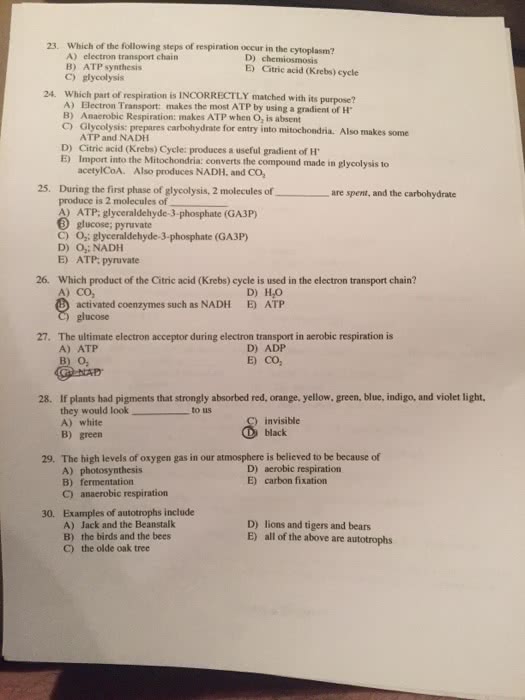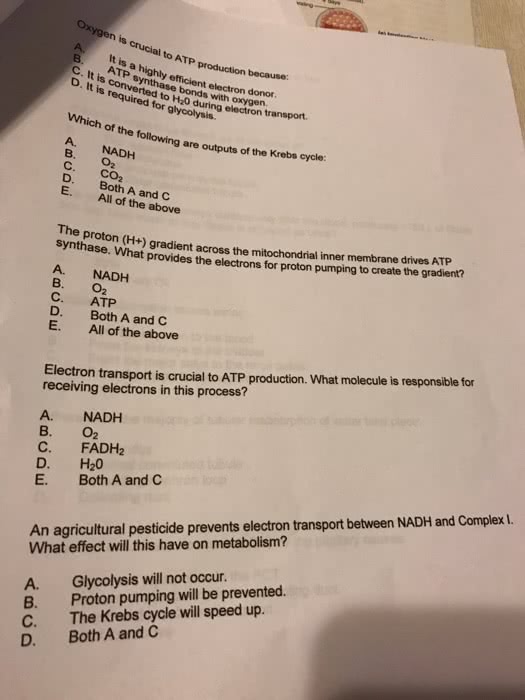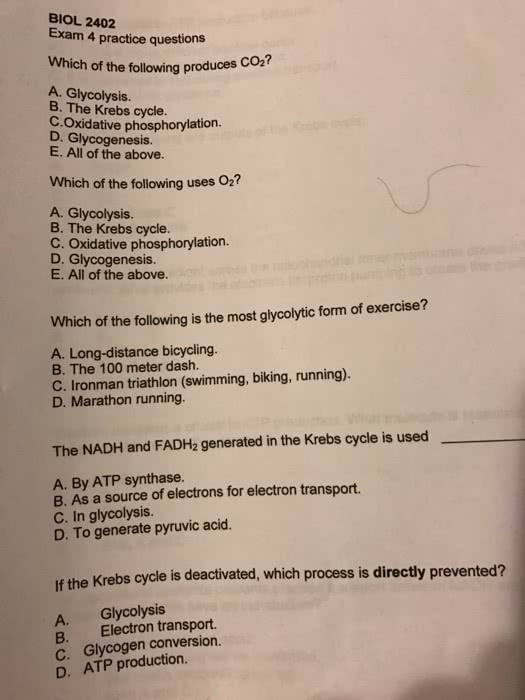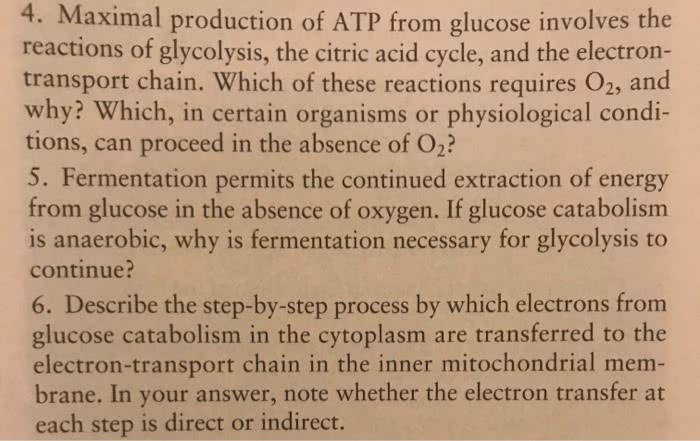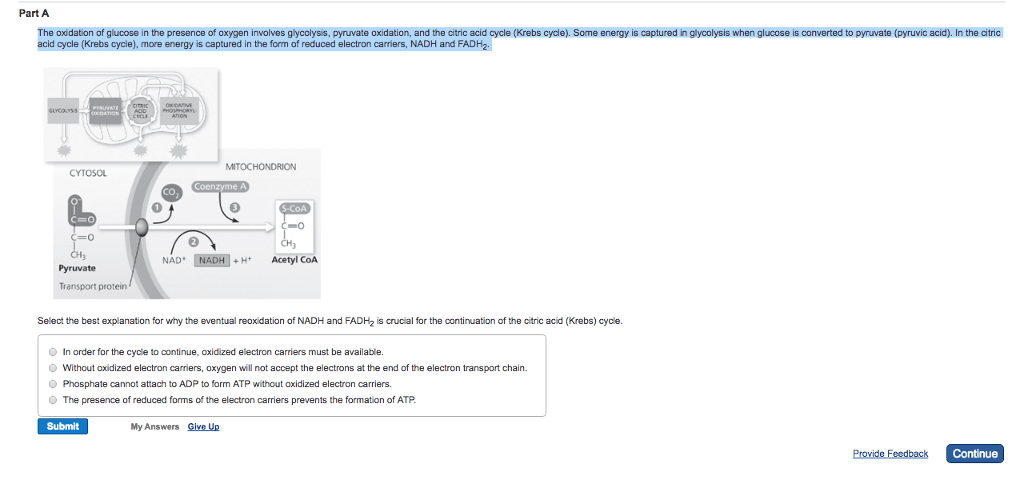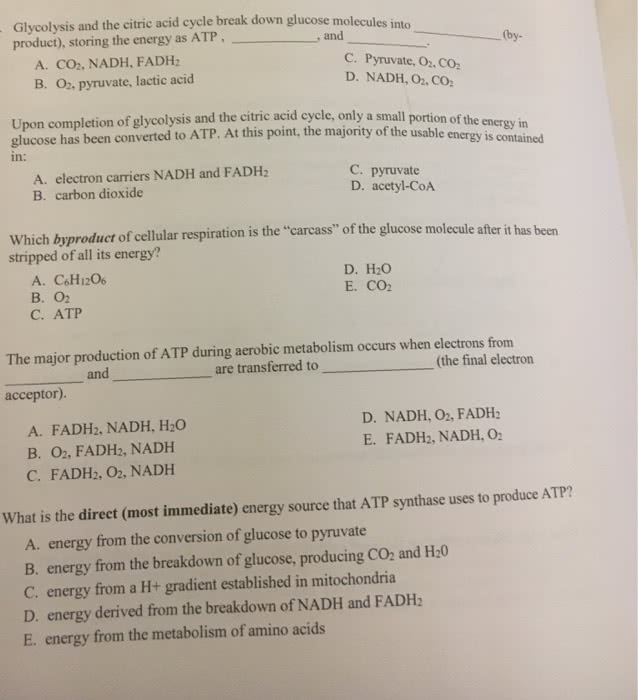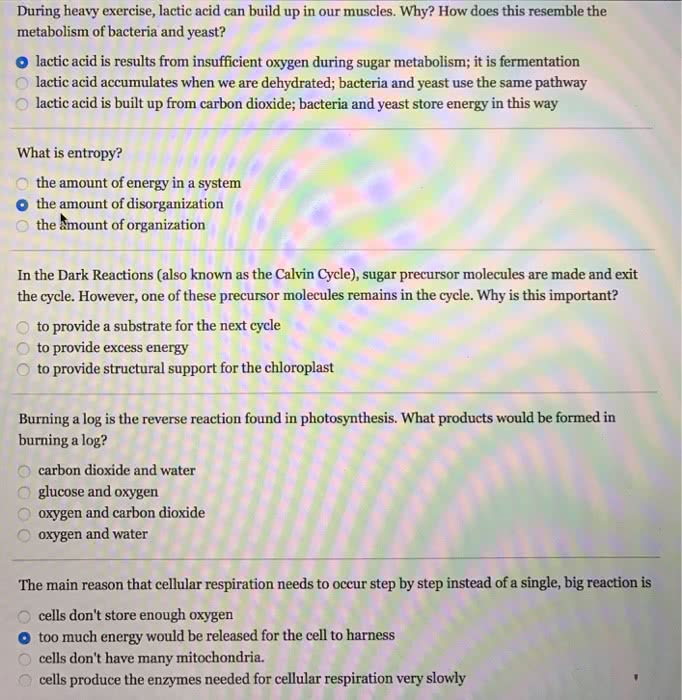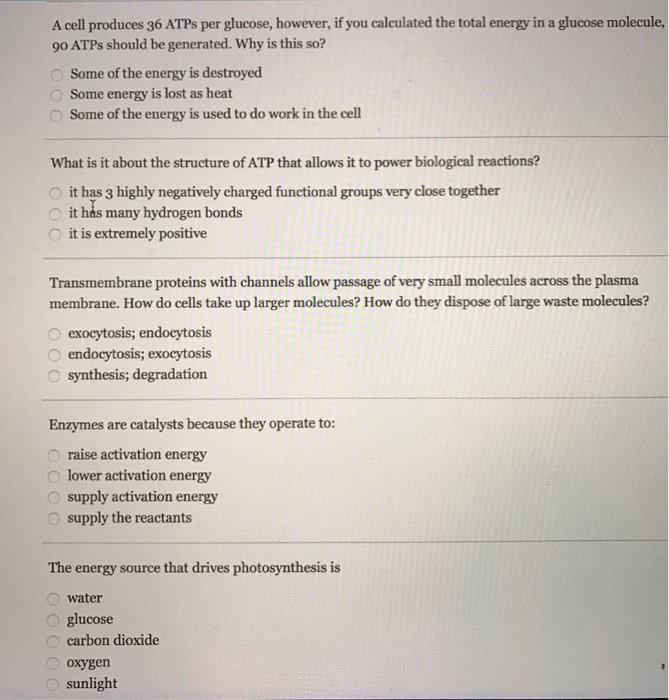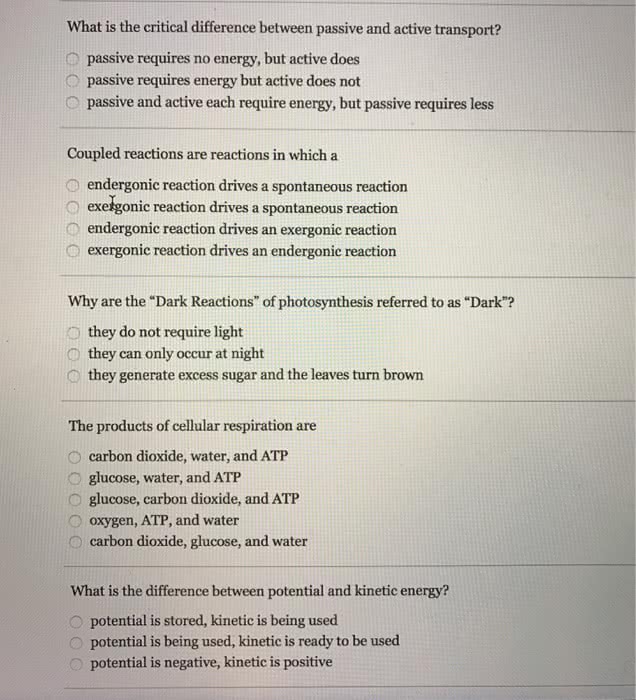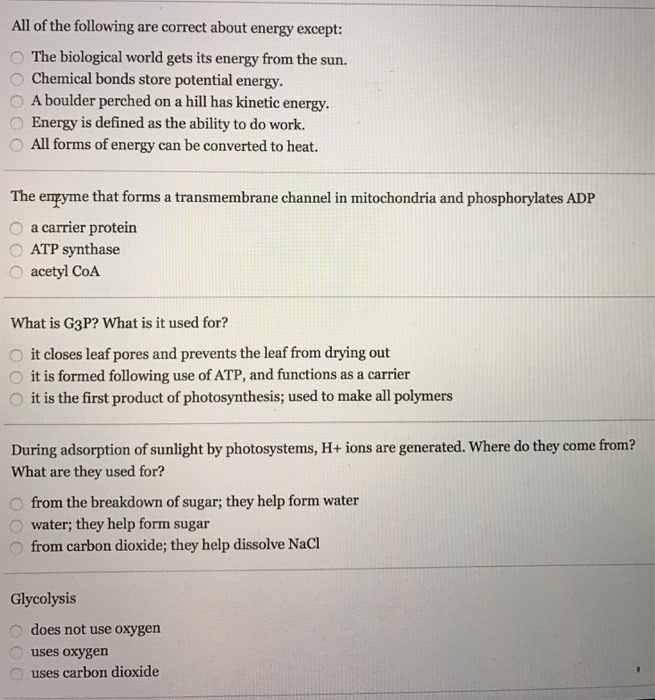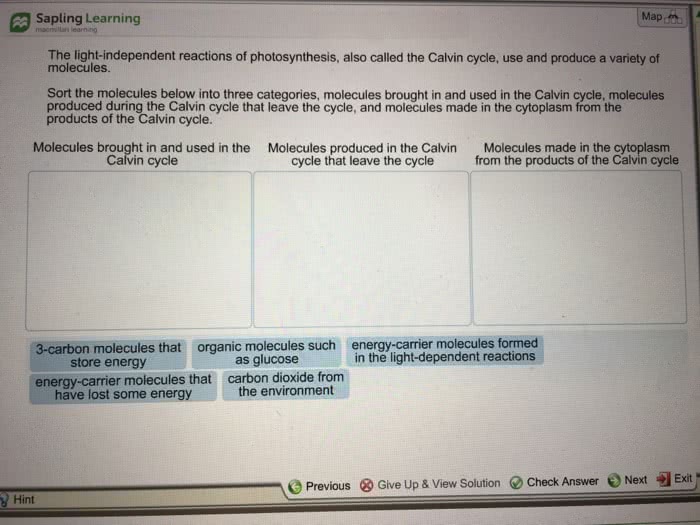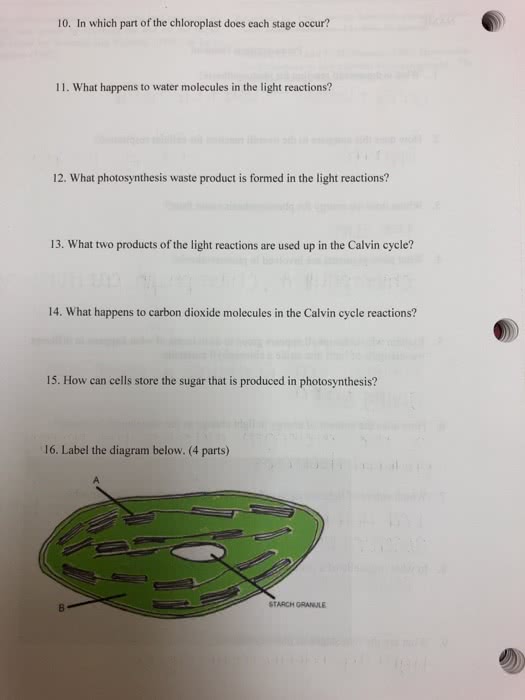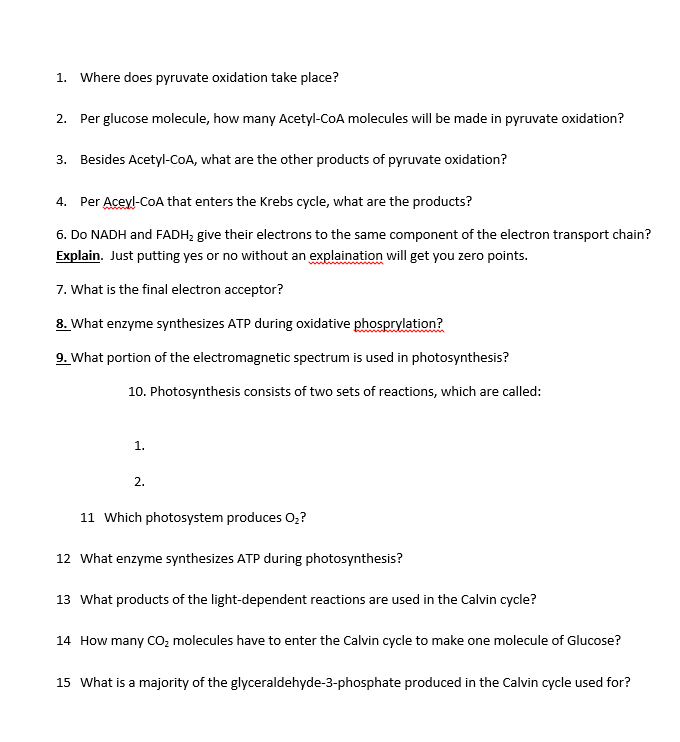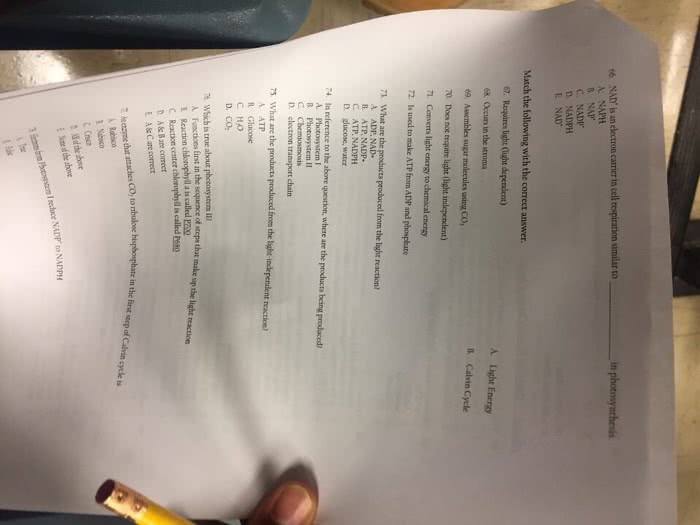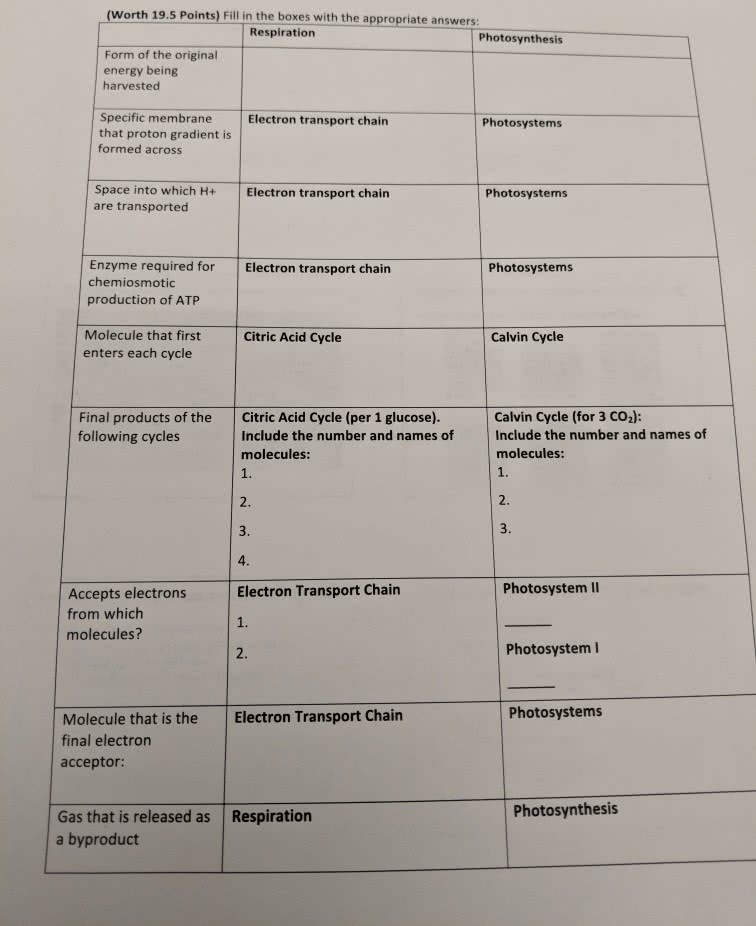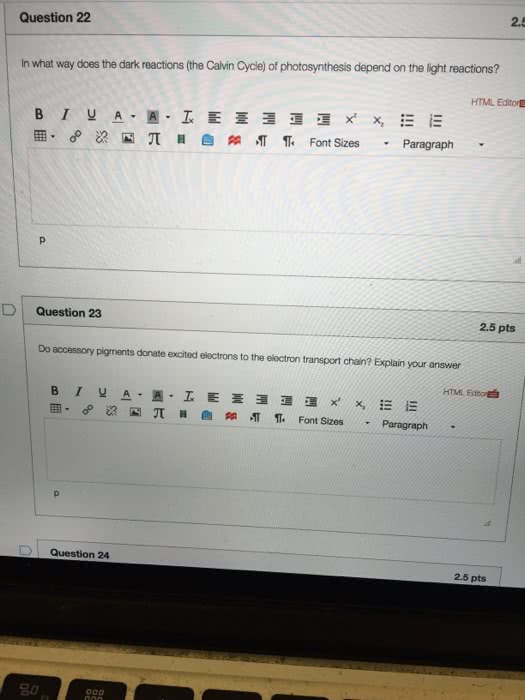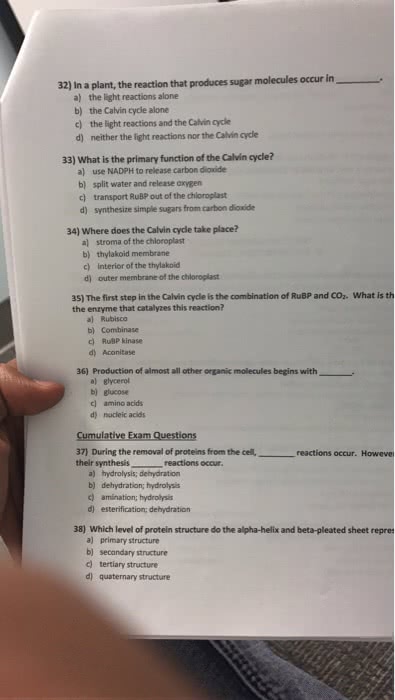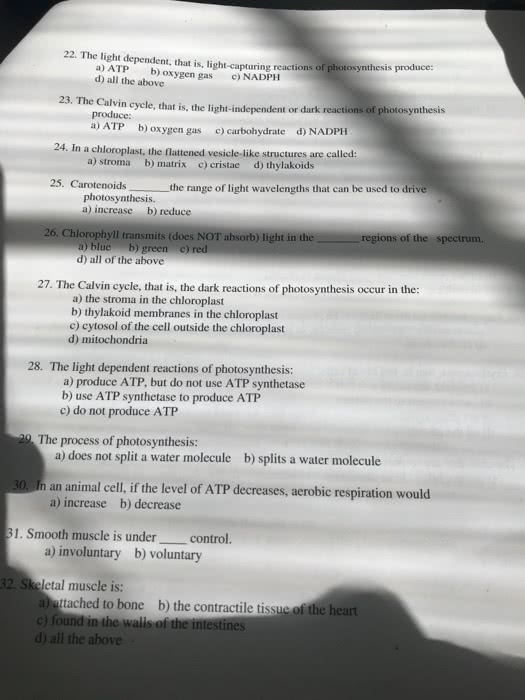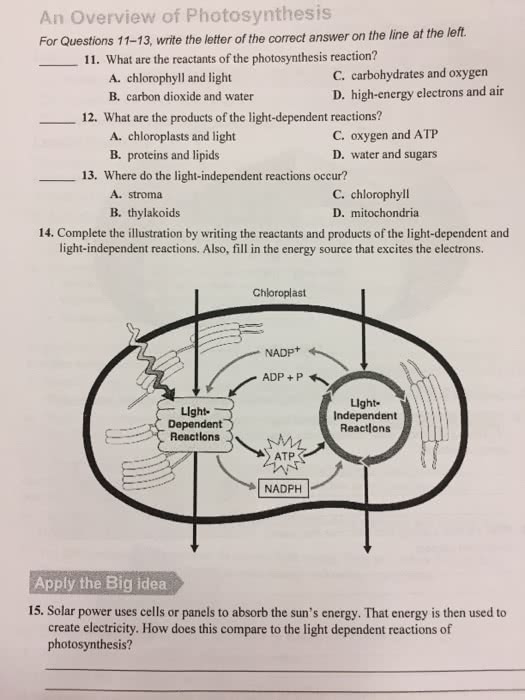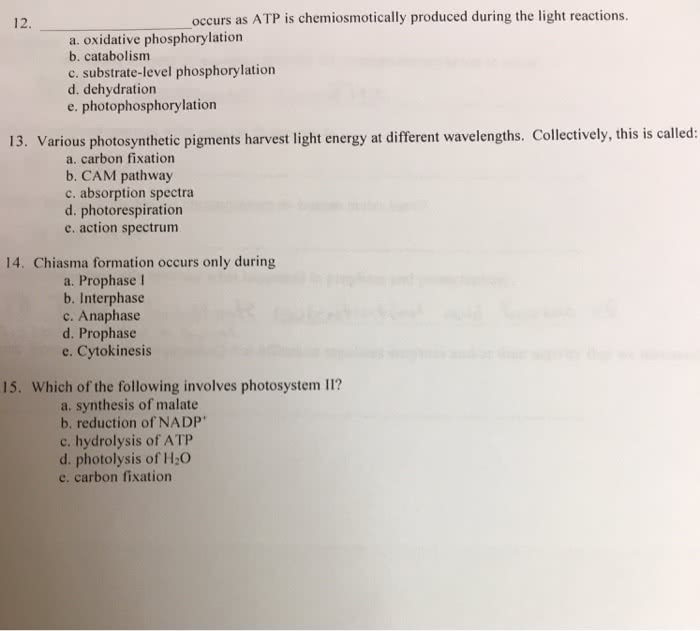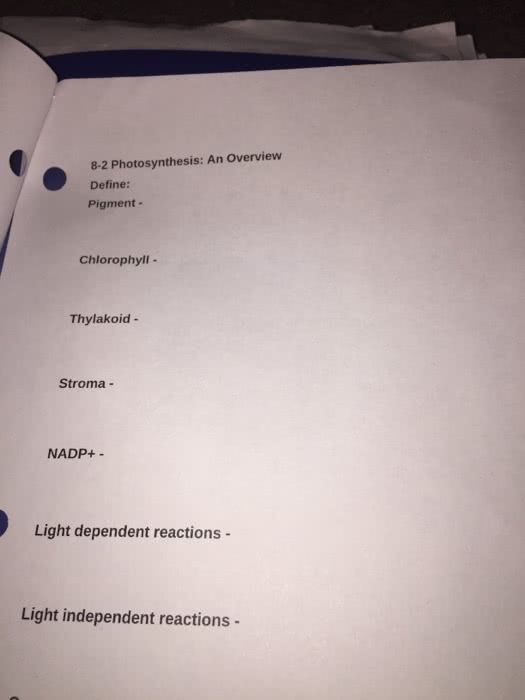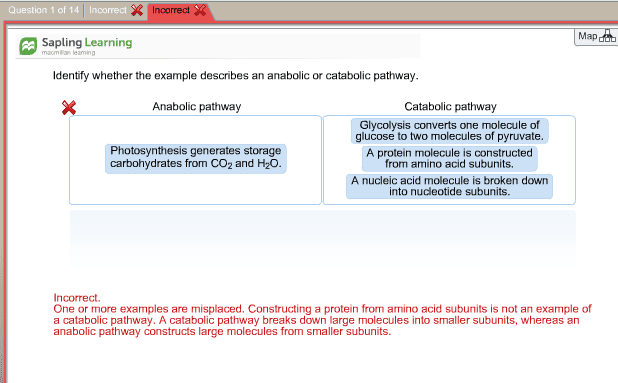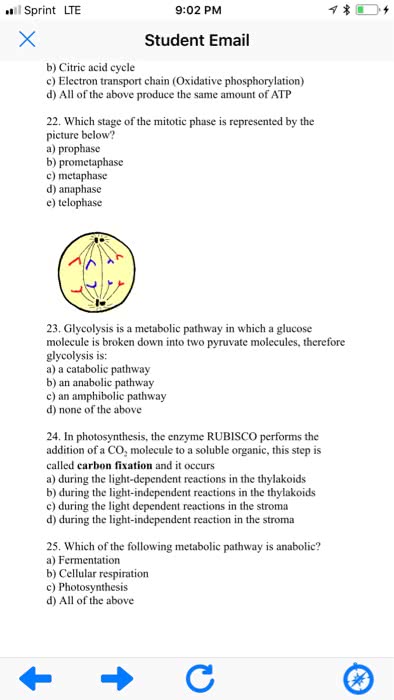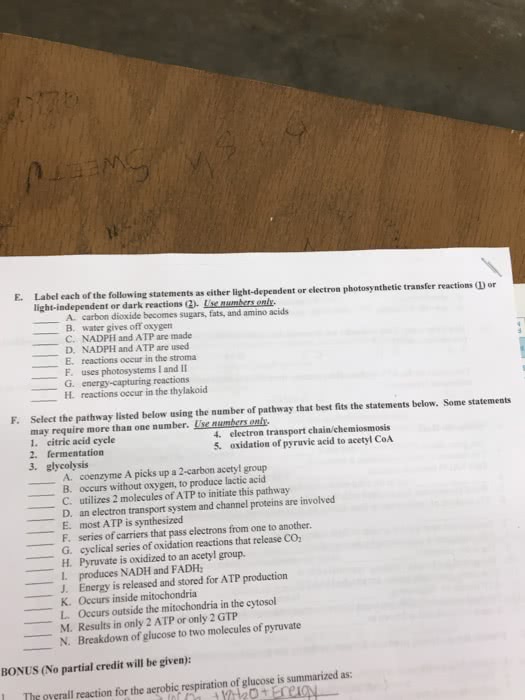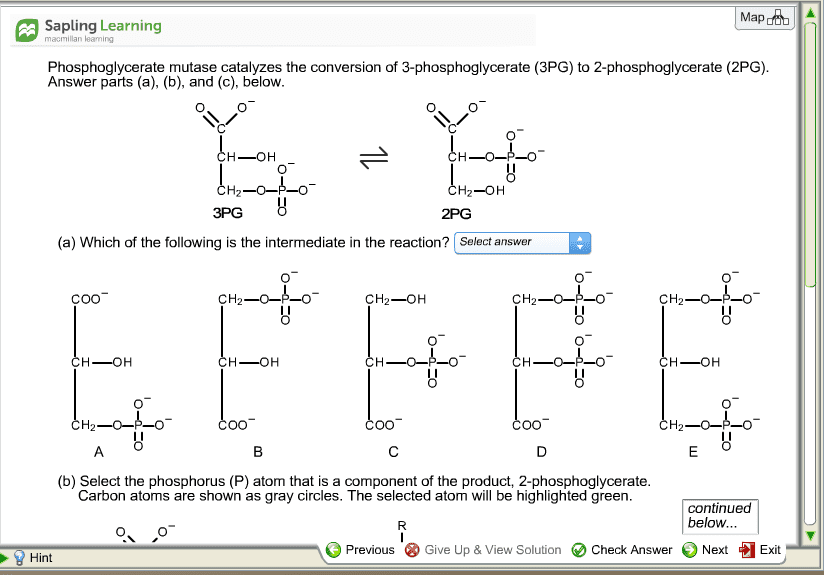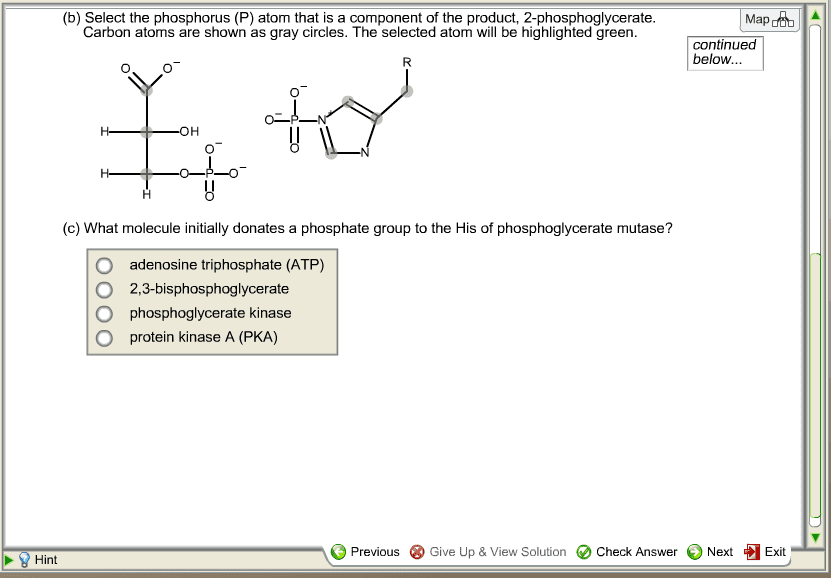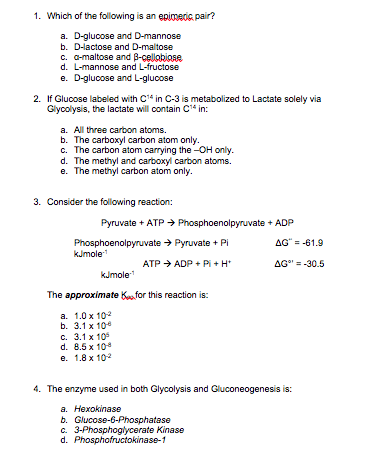jerlin
Anna University - Chennai
5 Followers
1 Following
0 Helped
jerlinLv10
27 Jan 2023
Answer: The issue in the code is that the build method of the MyAppState class...
jerlinLv10
25 Jan 2023
Answer: a. reducing agent; oxidizing agent b. Succinate; CoQ c. Cytochrome bc1...
jerlinLv10
25 Jan 2023
Answer: a. NADH dehydrogenase complex, cytochrome bc complex, and cytochrome o...
jerlinLv10
25 Jan 2023
Answer: Electron transfer in the ETC is coupled to proton transfer from the ma...
jerlinLv10
25 Jan 2023
Answer: A, D, and E are correct. A. II mitochondrial membranes are ruptured, o...
jerlinLv10
25 Jan 2023
Answer: The mitochondrial electron transport chain (ETC) is a series of protei...
jerlinLv10
25 Jan 2023
Answer: In complex IV of the electron transport chain, protons are pumped acro...
jerlinLv10
25 Jan 2023
Answer: The steps of respiration that occur in the cytoplasm are: Glycolysis T...
jerlinLv10
25 Jan 2023
Answer: Oxygen is crucial to ATP production because it is a highly efficient e...
jerlinLv10
25 Jan 2023
Answer: CO2 is produced in the Krebs cycle and oxidative phosphorylation. O2 i...
jerlinLv10
25 Jan 2023
Answer: The electron transport chain (ETC) in the inner mitochondrial membrane...
jerlinLv10
25 Jan 2023
Answer: The eventual reoxidation of NADH and FADH2 is crucial for the continua...
jerlinLv10
25 Jan 2023
Answer: Glycolysis: 2 ATP, 2 NADH Pyruvate Dehydrogenase Complex: 2 NADH, 2 CO...
jerlinLv10
25 Jan 2023
Answer: A. CO2, NADH, FADH2 B. NADH and FADH2 E. CO2 D. NADH, O2, FADH2 C. ene...
jerlinLv10
25 Jan 2023
Answer: During heavy exercise, lactic acid can build up in our muscles because...
jerlinLv10
25 Jan 2023
Answer: Molecules brought in and used in the Calvin cycle: carbon dioxide Mole...
jerlinLv10
25 Jan 2023
Answer: The light reactions of photosynthesis occur in the thylakoid membrane ...
jerlinLv10
25 Jan 2023
Answer: The components of the electron transport chain found in the mitochondr...
jerlinLv10
25 Jan 2023
Answer: Pyruvate oxidation takes place in the matrix of the mitochondria. Per ...
jerlinLv10
25 Jan 2023
Answer: The products produced from the light dependent reaction are ATP and NA...
jerlinLv10
25 Jan 2023
Answer: Respiration: Form of the original energy being harvested: glucose Spec...
jerlinLv10
25 Jan 2023
Answer: a. When a photon of light strikes a photosystem, it is absorbed by a p...
jerlinLv10
25 Jan 2023
Answer: The light reactions of photosynthesis take place in the thylakoid memb...
jerlinLv10
25 Jan 2023
Answer: The dark reactions of photosynthesis, also known as the Calvin cycle, ...
jerlinLv10
25 Jan 2023
Answer: a) the light reactions and the Calvin cycle. b) synthesize simple suga...
jerlinLv10
25 Jan 2023
Answer: Water, sunlight, and carbon dioxide Oxygen, ATP, and NADPH Carbon diox...
jerlinLv10
25 Jan 2023
Answer: The light dependent, that is, light-capturing reactions of photosynthe...
jerlinLv10
25 Jan 2023
Answer: A. What are the reactants of the photosynthesis reaction? carbon dioxi...
jerlinLv10
25 Jan 2023
Answer: e. photophosphorylation c. absorption spectra a. Prophase I b. reducti...
jerlinLv10
25 Jan 2023
Answer: Pigment: A substance that absorbs specific wavelengths of light, givin...
jerlinLv10
25 Jan 2023
Answer: The first example, "Glycolysis converts one molecule of glucose to two...
jerlinLv10
25 Jan 2023
Answer: b) prometaphase a) a catabolic pathway d) during the light-independent...
jerlinLv10
25 Jan 2023
Answer: a) Mitochondrial matrix; Mitochondrial inner membrane; Cytoplasm d) It...
jerlinLv10
25 Jan 2023
Answer: A. 2 (light-independent or dark reactions) B. D (light-dependent or el...
jerlinLv10
25 Jan 2023
Answer: B. the sum of all the anabolic and catabolic reactions in a cell. B. o...
jerlinLv10
25 Jan 2023
Answer: To calculate the standard free energy change (Delta G) of the reaction...
jerlinLv10
24 Jan 2023
Answer: (a) The intermediate in the reaction is not provided in the options gi...
jerlinLv10
24 Jan 2023
Answer: D-glucose and D-mannose are an epime pair. The lactate will contain C1...
jerlinLv10
24 Jan 2023
Answer: 3-Phosphoglycerate (3PG) is a molecule that is produced as a result of...
jerlinLv10
24 Jan 2023
Answer: If radioactive glucose labeled at carbon #6 with 14C were incubated in...
